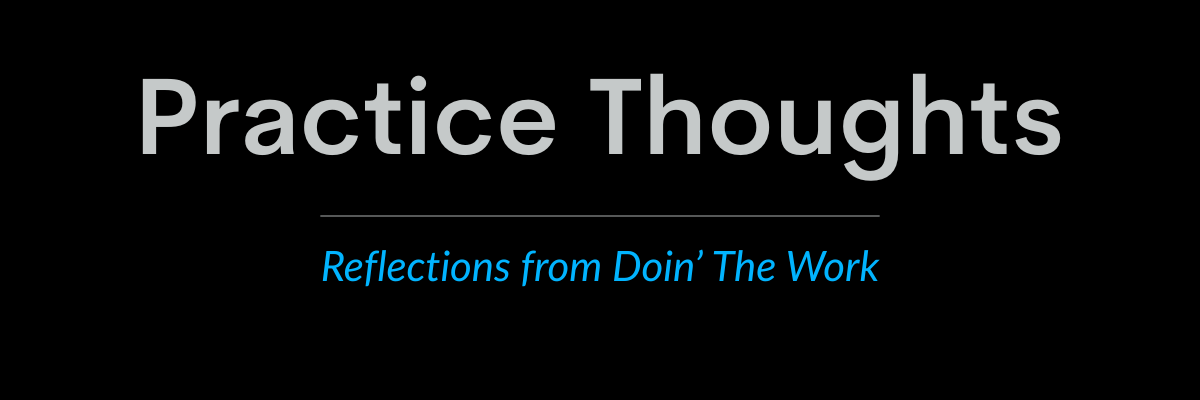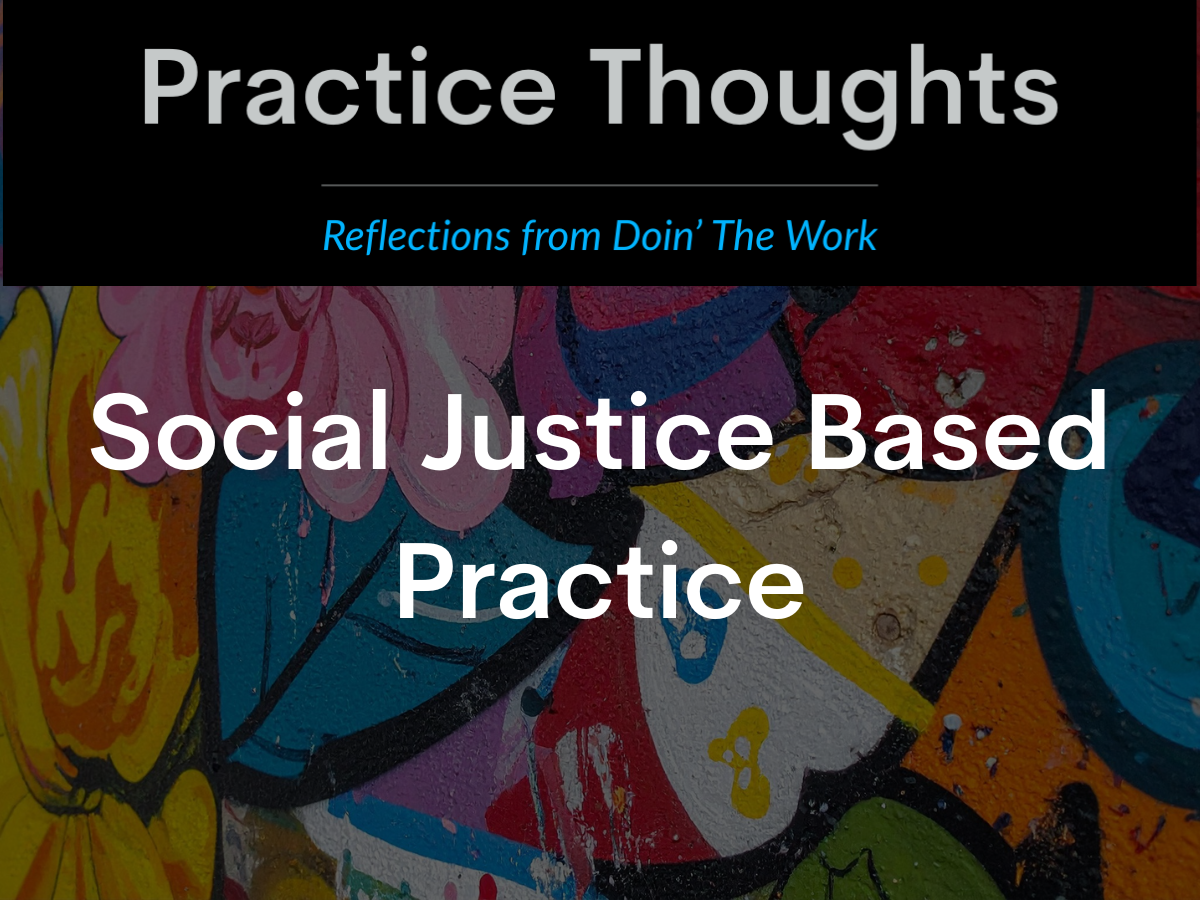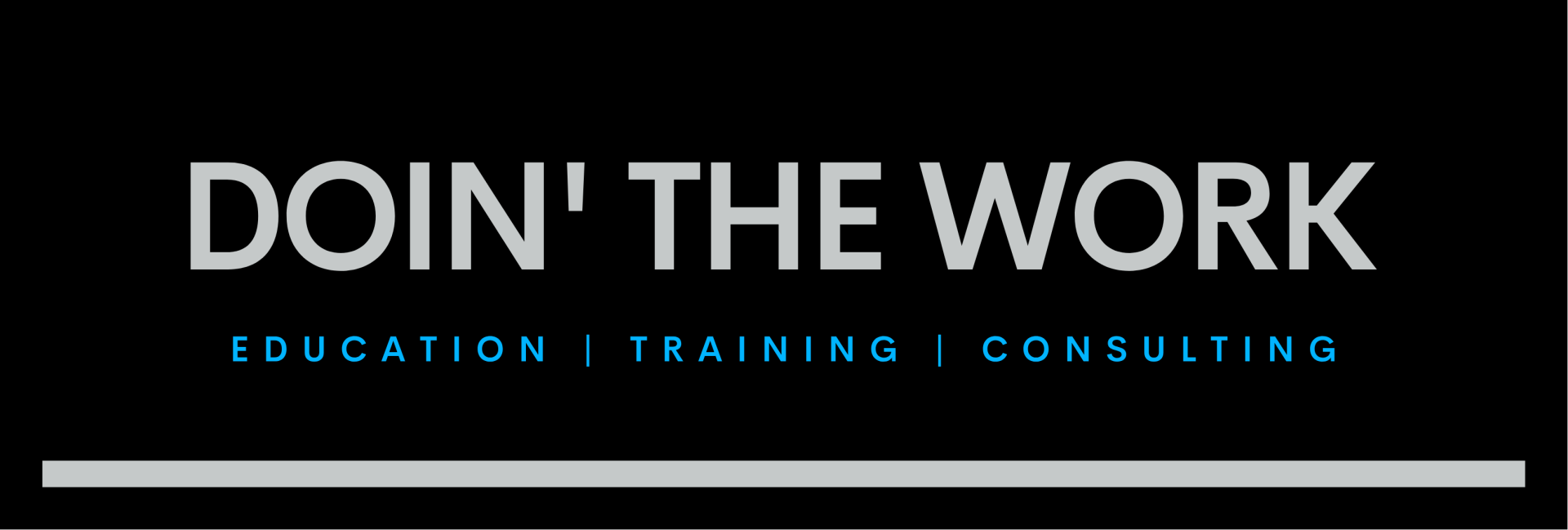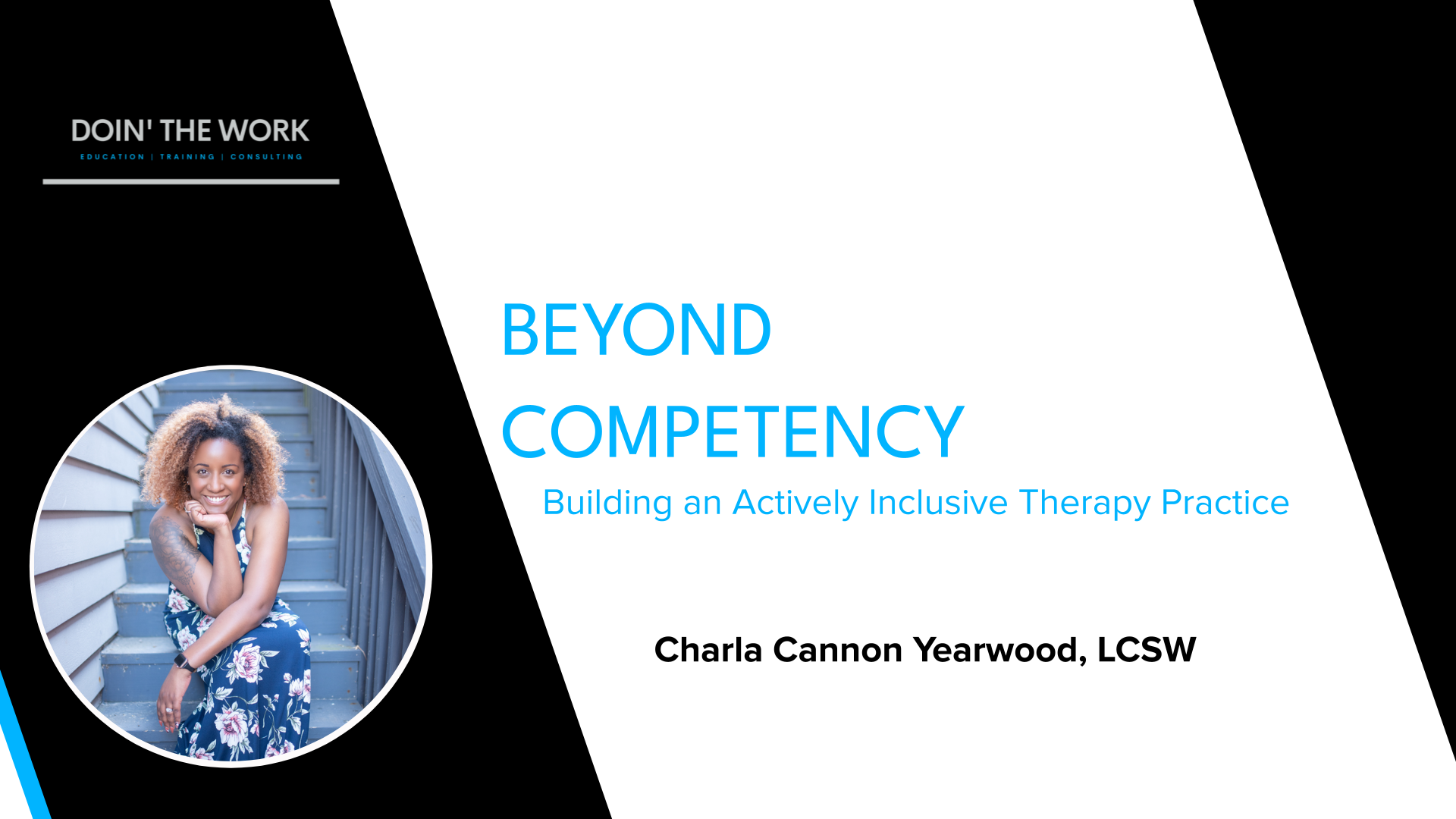

As many of you know, I practice—both as a clinician and educator–using a social justice/anti-oppressive approach. For some time now, I’ve been thinking of some of the critiques I’ve seen of social justice oriented practice (SJP), particularly when it comes to clinical practice. You can easily find these in various journals, websites, and media outlets. A couple years ago, The New York Times even published a hit piece on SJP. I’m not going to go through every critique out there of SJP, or link to them. I don’t want to turn Practice Thoughts into a long-form publication that goes that deep. However, in order to explore this topic, I think it’s necessary to look at a few of the main points being raised.
The main critiques of SJP I’ve seen, specific to clinical practice, involve:
Are there practitioners who approach this work in a rigid or prescriptive way? Possibly. Are there educators who teach it without nuance or flexibility? It’s possible. But I haven’t personally seen that in the syllabi I’ve reviewed or among the educators I’ve worked with. I know that some critiques have been published by students or graduates, often in media outlets, but many of these critiques seem to reflect fundamental disagreements with acknowledging systemic oppression in the first place. That’s a very different concern than misapplication of the framework, and I think it’s important not to conflate the two. Of course, anything is possible, and like with everything, there could be various ways SJP/AOP is being taught. Some reading this piece may think that my application of these approaches is incorrect. I think it is really important that we approach this work with openness, critical self-reflection, and flexibility.
In my own clinical practice, I do not view clients as oppressors or victims. I do not think that SJP or AOP require me to do this. At the same time, I am thinking of the various social structures and the client’s positionality within those structures. I’ve done—and continue to do—my own work on my understanding of those structures and my own positionality within them. Depending on my assessment of where the client is at in regards to dialogue about these structures, I will adjust my approach.
For example, let’s say I was working with a white male client whose issues I believed were tied to ideas about work and traditional masculinity. I would not see him as some white male oppressor. I would see him in his full humanity and my goal would be to help him meet his goals, such as better relationships with his family members. After establishing a solid rapport, I would ask him about his beliefs about how men are supposed to be. I would probably not explicitly mention male socialization, patriarchy, or sexism. Of course this depends on the therapeutic relationship and my clinical assessment of the client based on the work together up until this point.
Let’s say in this example that the client responded in a way that was clear that this was not something he wanted to talk about. Let’s also say that in this scenario, I decide not to push the issue. There may be times when pushing is important, but in this case, my clinical judgment is telling me that this was not one of them. I would think of other ways I could help him to see how his beliefs were affecting his relationships without needing to explicitly discuss systems. The work we would do would be very similar to the work we would do if I was more explicit, ideally with a similar level of effectiveness and positive impact.
Might there be a part of me that wishes we would more directly discuss masculinity, patriarchy, and sexism? Yes. But I also need to ask myself why. Would the work we do result in better relationships with himself, his family, and those around him? Ideally, yes. Could being more explicit about naming systems and dominant beliefs result in a more transformative experience for the client, his family, and society at large? Possibly. However, for the purpose of this month’s Practice Thoughts, I’m deliberately using a scenario with a client who isn’t ready for that explicit conversation. And, like all interventions, if I push too hard, he might choose to leave treatment.
By ignoring differences, we are pretending they don’t exist. Now, some people might be fine with that. They are probably folks that do not believe that there is systemic oppression. Proving systemic oppression is beyond the scope of this piece. For those of us who do believe that systemic oppression exists, ignoring differences means ignoring power and how it impacts people. That would actually be doing a disservice to clients.
I can look at the three critiques and see how they could be rooted in the honest desire to help people. However, I believe there are misunderstandings of how SJP/AOP works in actual practice. I hope these Practice Thoughts have helped shed light on how SJP/AOP can actually work in practice. By not engaging in SJP/AOP, we can actually cause harm. Engaging in SJP/AOP allows us to flexibly meet people where they’re at, honoring their experience, and working for transformative change in alignment with their goals.
What are your thoughts/reflections? Join the community and engage in our discussions.
The main critiques of SJP I’ve seen, specific to clinical practice, involve:
- disagreement with seeing people as oppressors and victims,
- the need for neutrality to make sure we don’t push our own beliefs onto clients, and
- the importance of viewing all people as humans and not making such a big deal of our differences.
Of course, there are many more critiques out there, but I’ll focus on these three. What I share here is based on my own practice experience, as well as conversations with other practitioners over many years. It also includes my experience as an educator, which involves developing, reviewing, and using syllabi across multiple universities.
When I think of SJP—or anti-oppressive practice (AOP)—I think of an orientation with many different applications. There are foundational elements, like understanding systems of oppression and our own positionality, that are essential to doing this work. But how a practitioner engages with SJP will vary depending on who they are, their context, their clients, their assessment, and the intervention. So my first issue with these critiques is that they tend to frame SJP or AOP as rigid, dogmatic, or prescriptive.
When I think of SJP—or anti-oppressive practice (AOP)—I think of an orientation with many different applications. There are foundational elements, like understanding systems of oppression and our own positionality, that are essential to doing this work. But how a practitioner engages with SJP will vary depending on who they are, their context, their clients, their assessment, and the intervention. So my first issue with these critiques is that they tend to frame SJP or AOP as rigid, dogmatic, or prescriptive.
Are there practitioners who approach this work in a rigid or prescriptive way? Possibly. Are there educators who teach it without nuance or flexibility? It’s possible. But I haven’t personally seen that in the syllabi I’ve reviewed or among the educators I’ve worked with. I know that some critiques have been published by students or graduates, often in media outlets, but many of these critiques seem to reflect fundamental disagreements with acknowledging systemic oppression in the first place. That’s a very different concern than misapplication of the framework, and I think it’s important not to conflate the two. Of course, anything is possible, and like with everything, there could be various ways SJP/AOP is being taught. Some reading this piece may think that my application of these approaches is incorrect. I think it is really important that we approach this work with openness, critical self-reflection, and flexibility.
In my own clinical practice, I do not view clients as oppressors or victims. I do not think that SJP or AOP require me to do this. At the same time, I am thinking of the various social structures and the client’s positionality within those structures. I’ve done—and continue to do—my own work on my understanding of those structures and my own positionality within them. Depending on my assessment of where the client is at in regards to dialogue about these structures, I will adjust my approach.
For example, let’s say I was working with a white male client whose issues I believed were tied to ideas about work and traditional masculinity. I would not see him as some white male oppressor. I would see him in his full humanity and my goal would be to help him meet his goals, such as better relationships with his family members. After establishing a solid rapport, I would ask him about his beliefs about how men are supposed to be. I would probably not explicitly mention male socialization, patriarchy, or sexism. Of course this depends on the therapeutic relationship and my clinical assessment of the client based on the work together up until this point.
Let’s say in this example that the client responded in a way that was clear that this was not something he wanted to talk about. Let’s also say that in this scenario, I decide not to push the issue. There may be times when pushing is important, but in this case, my clinical judgment is telling me that this was not one of them. I would think of other ways I could help him to see how his beliefs were affecting his relationships without needing to explicitly discuss systems. The work we would do would be very similar to the work we would do if I was more explicit, ideally with a similar level of effectiveness and positive impact.
Might there be a part of me that wishes we would more directly discuss masculinity, patriarchy, and sexism? Yes. But I also need to ask myself why. Would the work we do result in better relationships with himself, his family, and those around him? Ideally, yes. Could being more explicit about naming systems and dominant beliefs result in a more transformative experience for the client, his family, and society at large? Possibly. However, for the purpose of this month’s Practice Thoughts, I’m deliberately using a scenario with a client who isn’t ready for that explicit conversation. And, like all interventions, if I push too hard, he might choose to leave treatment.
Now, in this example, I wouldn’t call what I would do as neutral either. I wouldn’t push the issue, but I would use my knowledge of dominant cultural messages and systems of oppression to engage in an intervention that results in a positive outcome. My years of work challenging racism and sexism would help me to have insight into what was happening. That’s not neutral. And asking what he thinks about messages about being a man isn’t neutral either. And even if I decide to challenge him some more, I think that would be okay. That’s something I might need to work on. But that also doesn’t mean I would be pushing my own agenda onto the client. That approach would be aligned with his overall goals.
I’ve addressed the first two critiques, but what about the third one—the importance of viewing all people as humans and not making such a big deal of our differences? Interestingly, I believe that the only way we can view all people as fully human is to not only notice our differences, but learn about them and bring them into our work. Otherwise, we are actually engaging in oppression by ignoring race/racism, sex/sexism, gender/cisgenderism, sexual orientation/heterosexism, class/classism, disability/ableism, immigration status/xenophobia, and so on.
I’ve addressed the first two critiques, but what about the third one—the importance of viewing all people as humans and not making such a big deal of our differences? Interestingly, I believe that the only way we can view all people as fully human is to not only notice our differences, but learn about them and bring them into our work. Otherwise, we are actually engaging in oppression by ignoring race/racism, sex/sexism, gender/cisgenderism, sexual orientation/heterosexism, class/classism, disability/ableism, immigration status/xenophobia, and so on.
By ignoring differences, we are pretending they don’t exist. Now, some people might be fine with that. They are probably folks that do not believe that there is systemic oppression. Proving systemic oppression is beyond the scope of this piece. For those of us who do believe that systemic oppression exists, ignoring differences means ignoring power and how it impacts people. That would actually be doing a disservice to clients.
I can look at the three critiques and see how they could be rooted in the honest desire to help people. However, I believe there are misunderstandings of how SJP/AOP works in actual practice. I hope these Practice Thoughts have helped shed light on how SJP/AOP can actually work in practice. By not engaging in SJP/AOP, we can actually cause harm. Engaging in SJP/AOP allows us to flexibly meet people where they’re at, honoring their experience, and working for transformative change in alignment with their goals.
What are your thoughts/reflections? Join the community and engage in our discussions.
Get Connected. Join The Community.
We’re building a community of learning, reflection, and action. Come connect with others committed to justice, healing, and equity in their work.
You'll also be the first to know about new CE opportunities, podcast episodes, and tools to support your practice.
You'll also be the first to know about new CE opportunities, podcast episodes, and tools to support your practice.




